Key takeaways:
- GIMP is a powerful open-source tool favored by digital artists for its extensive features comparable to premium software.
- Customizing the interface, adjusting brush settings, and creating a personal color palette enhance the painting experience in GIMP.
- Utilizing layers allows flexibility in the creative process, enabling artists to manage mistakes and experiment freely.
- Regular practice and engaging with online communities improve skills and foster confidence in using GIMP effectively.
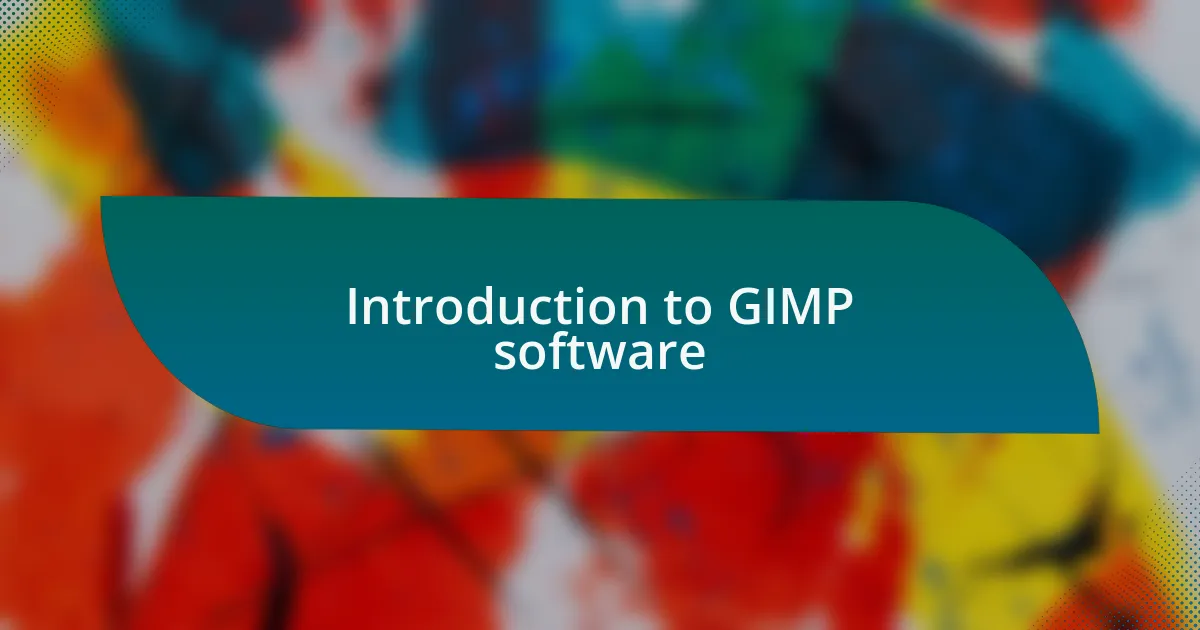
Introduction to GIMP software
GIMP, or GNU Image Manipulation Program, is a powerful open-source software that has gained a reputation as a top choice for digital artists and graphic designers alike. In my experience, it’s incredible how a free tool can offer features comparable to some of the more expensive, industry-standard programs. I often find myself marveling at how accessible digital painting can be for anyone willing to dive in.
When I first started using GIMP, the vast array of options and customization felt overwhelming yet exhilarating. I remember spending countless hours just experimenting with brushes and layers, which allowed me to develop a unique style. Have you ever found yourself lost in a creative tool, where each click opens a new door to artistic possibilities?
What stands out to me about GIMP is its vibrant community, which is always ready to share tips and tricks. Whether it’s tutorials on using the paths tool or exploring advanced layer effects, I’ve encountered a wealth of resources that made my learning curve much smoother. For anyone considering GIMP, I can’t help but wonder: what artistic horizons could you explore with this versatile program?
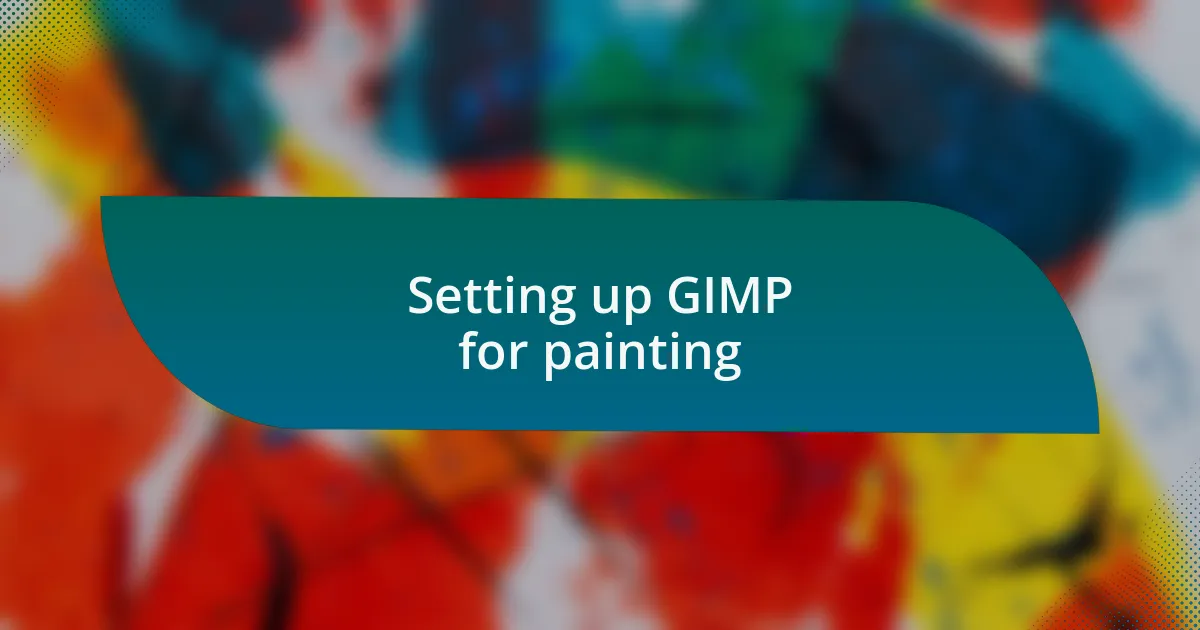
Setting up GIMP for painting
To set up GIMP for painting, the first step I take is to customize the interface to suit my workflow. I find that organizing my workspace makes a significant difference; for instance, I usually dock the toolbox on the left and the layers panel on the right. This arrangement creates a more intuitive painting experience, allowing me to focus on my art rather than hunting for tools.
Next, I dive into the brush settings. I recall experimenting with different brush dynamics, such as opacity and size, because these settings can drastically change how I paint. Did you know that adjusting these parameters can help simulate natural brush strokes? I often play around with these settings until I find a balance that mimics the feeling of traditional painting.
Lastly, I ensure that my color palette is easily accessible. What I like to do is create a custom palette filled with colors I regularly use in my artwork, which can often save time during the creative process. There’s something satisfying about having a personal collection of hues at my fingertips—it’s like having my own artist’s toolbox ready for inspiration to strike at any moment!
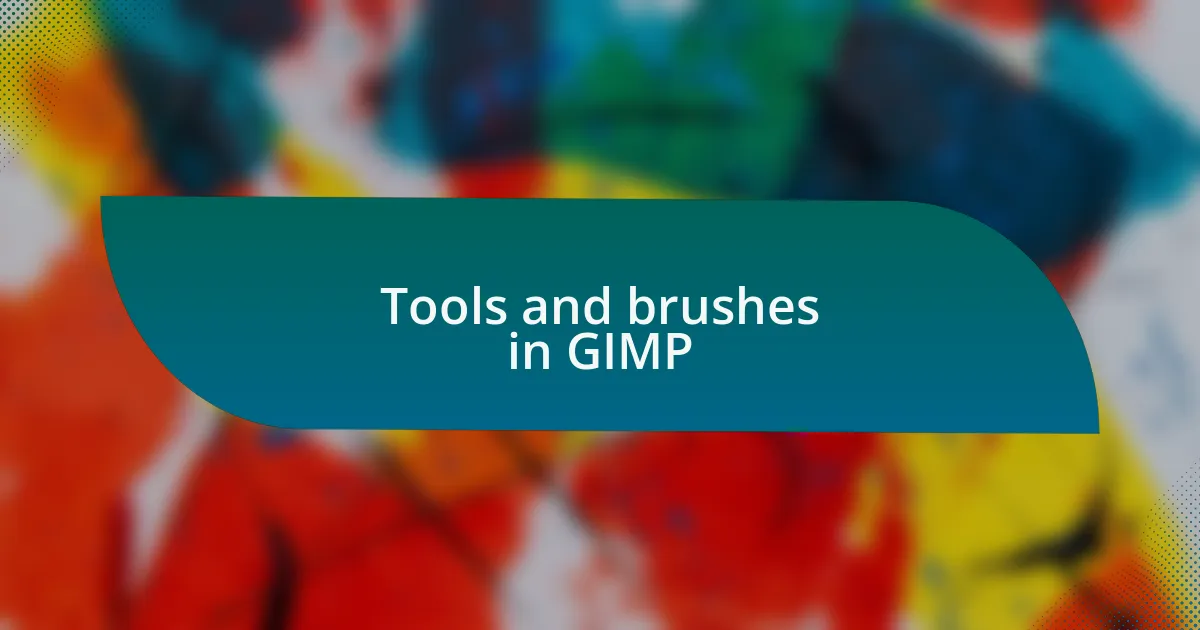
Tools and brushes in GIMP
When it comes to tools and brushes in GIMP, I have a soft spot for the versatility they offer. I often switch between the Paintbrush and Pencil tools, depending on the effect I’m aiming for. The Paintbrush gives me that fluidity I love for blending colors, while the Pencil tool lets me define sharper edges. Have you ever felt the thrill of switching tools mid-creation and discovering new textures? It’s like opening a new door in a familiar room.
One feature I frequently explore is the ‘Brush Dynamics’ setting. I remember the time I decided to try out the ‘Pressure’ settings for the first time. My digital strokes suddenly felt more responsive, mimicking the way my hand would move with a real brush. This dynamic interplay can create unique effects, encouraging me to experiment more with my approach.
Customization is key to making GIMP’s tools feel personal. I’ve created several brushes through the ‘Brush Editor’ that reflect my own art style. One of my favorite brushes is a textured one that resembles a watercolor wash. It’s fascinating to see how a simple adjustment can lead to a completely different feel in my artwork, making each piece uniquely mine. Exploring these tools is not just about functionality; it’s also about sparking creativity and finding joy in the process.
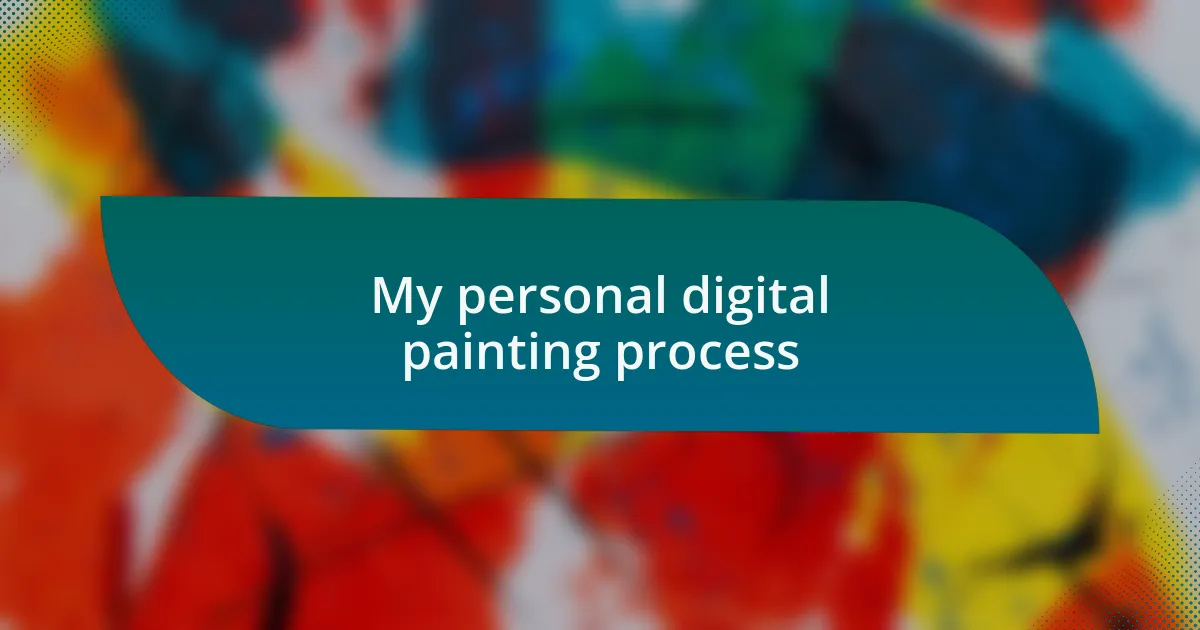
My personal digital painting process
When I dive into my digital painting process, I start with a rough sketch, just like laying the foundation of a building. I often use a light gray color for my outlines; it creates a subtle contrast against the vibrant hues I plan to incorporate later. It’s thrilling to see those initial lines transform as I gradually develop the composition, don’t you think?
As I paint, I usually work in layers. This technique allows for a flexibility that’s crucial in my creative process. There was a moment when I accidentally painted over a crucial part of my artwork, but instead of panicking, I simply hid that layer. This taught me that mistakes can often lead to unexpected discoveries and new directions in my work, much like a happy accident.
My final step involves polishing the details, where I indulge in adding textures and highlights. I love experimenting with light—sometimes I’ll seek inspiration from real-world objects to see how they interact with light and shadow. In one painting, I remember how a simple adjustment to the lighting completely changed the mood, making it feel atmospheric and alive. Have you ever seen how a single detail can breathe new life into your artwork? It’s moments like these that truly elevate my creations.
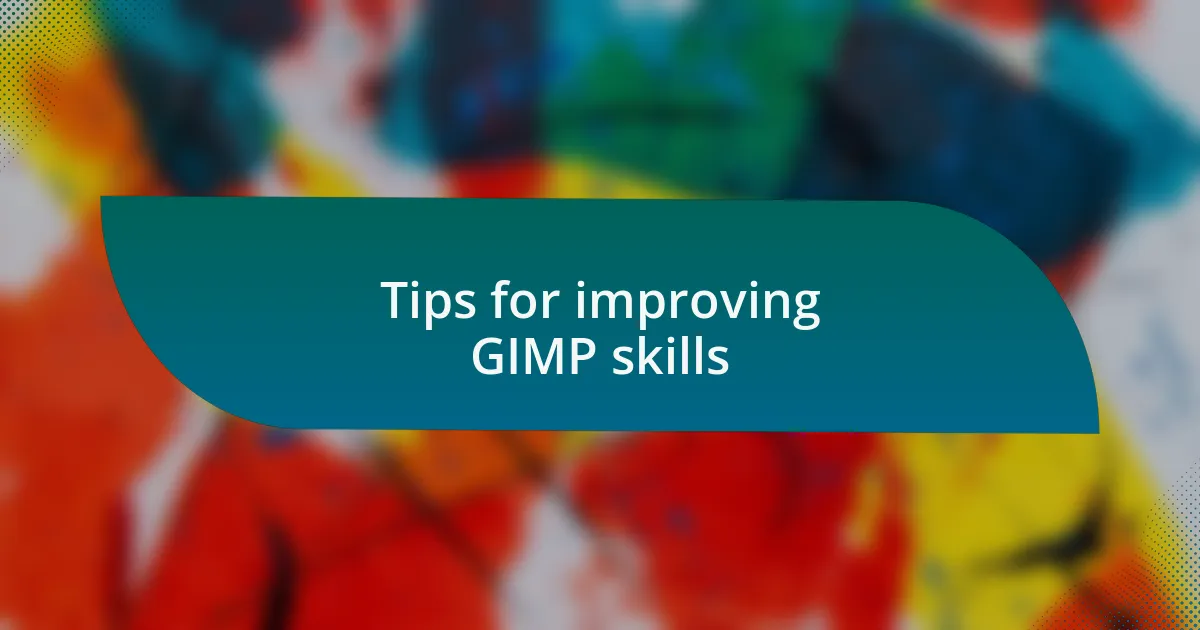
Tips for improving GIMP skills
To truly improve your GIMP skills, I recommend diving into online tutorials and communities. I remember my early days with GIMP when I stumbled upon a forum crammed with tips from seasoned artists. Engaging in these discussions not only boosted my knowledge but also built my confidence to experiment with new techniques. Have you ever felt stuck in your creative journey? Community support can be a game changer.
Another vital tip is to familiarize yourself with the various brushes and tools GIMP offers. When I first discovered custom brushes, it felt like unlocking a treasure chest of possibilities! I began to experiment with different textures, and the outcomes were rewarding. What tool do you wish you understood better? Sometimes, it’s just a matter of practice to uncover the magic hidden within those tools.
Lastly, I cannot stress enough the value of regular practice. I set aside time each week to explore different styles and techniques. There were times when I created absolute failures, but each mistake taught me something new. Have you ever looked back at your earlier work and noticed how much you’ve grown? Trust me, those moments of growth are worth every stroke of the brush.